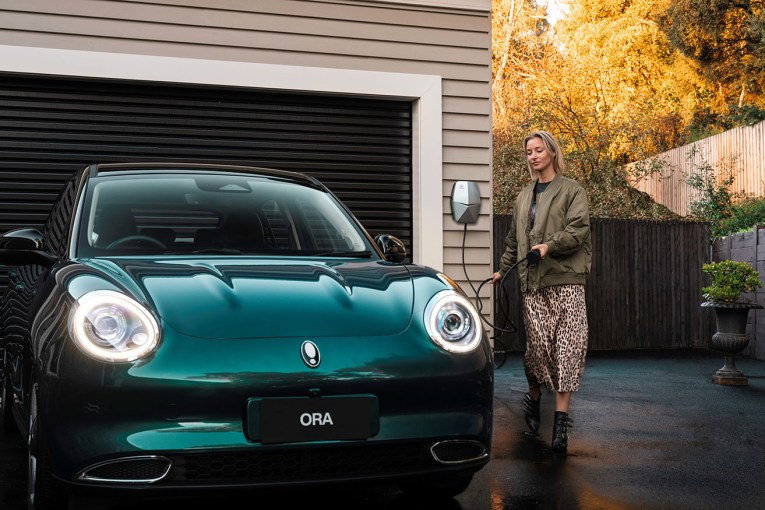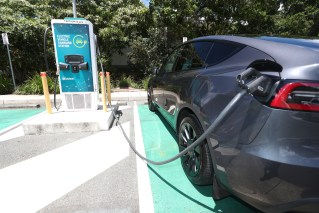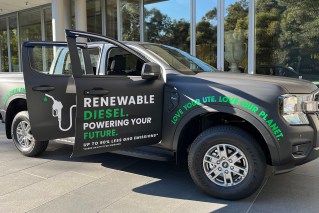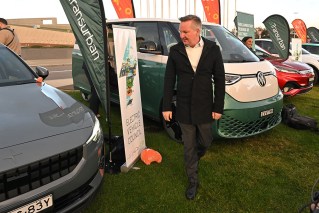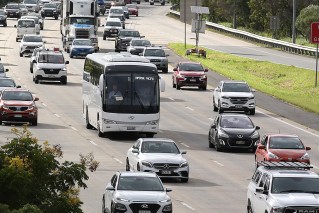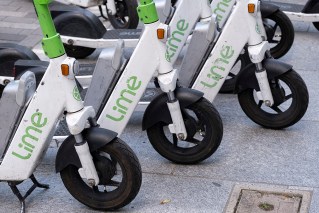Revealed: the winner in the battle of the light SUVs
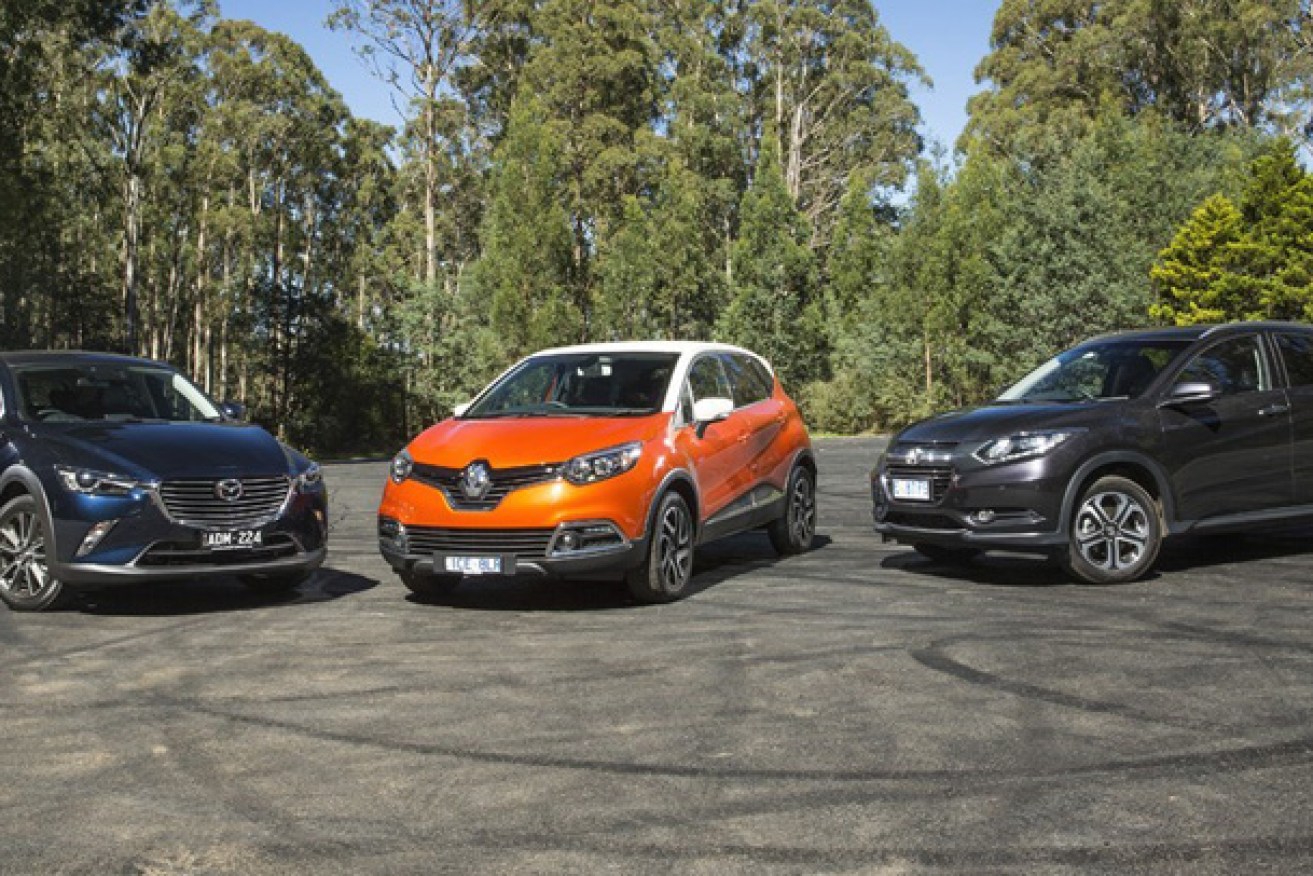
Motoring.com.au
The light SUV segment has quickly grown to become Australia’s most popular. On test are three of the newest models available, sampled here in high-grade trim spec at roughly $30,000 apiece.
Each is a practical, high-riding hatch with seating for five and a focus on technology at its core, and each is tested with a petrol engine, automatic transmission and in front-wheel drive format.
As you’d expect, it’s a very close match, though the differences, as subtle as they are, show there is a clear winner in this trio… though not for the reasons you may expect.
• Behind the scenes of the next James Bond car chase
• Looking for a small car? Here are five of the best
• Why Tesla is your new dream car
Power up
The Honda HR-V offers petrol power only, is purely front-wheel drive and comes only with a continuously variable transmission (CVT, as standard).
It is equipped with a relatively dated single-overhead-cam 1799cc multipoint-injected in-line four-cylinder engine, but is good for 105kW at 6500rpm and 172Nm at 4300rpm.
The Mazda CX-3 on the other hand offers a lot more choice. It’s available with petrol or diesel power, manual or automatic transmissions and even the choice of two- or all-wheel drive.
Our test example featured a modern twin-cam 1998cc direct-injected SKYACTIV-G engine common to the Mazda3 and CX-5. With 109kW at 6000rpm, the CX-3 was the most powerful SUV on test and also had the strongest torque value at 192Nm at 2800rpm.
The model sampled was fitted with a six-speed automatic transmission.

The Renault’s interior features sporty orange details. Photo: Motoring.com.au
The Renault Captur, like the HR-V, is available only in front-wheel-drive configuration, but there is a choice of two petrol powerplants and manual or dual-clutch (automatic) transmissions.
Our test car came with the larger twin-cam 1197cc turbocharged and direct-injected in-line four-cylinder unit (a smaller three-cylinder model is also available).
Output figures see the Captur offer 88kW at 4900rpm and 190Nm at 2000rpm.
The Captur was, by some margin the least powerful light SUV on test, but is more than equitable in terms of its torque value.
Mazda says the CX-3 will consume 6.1L/100km on the ADR Combined cycle, but will run happily on regular (91 RON) unleaded.
The Honda, which also uses regular fuel, is said to drink 6.9L/100km while the Renault Captur sips 5.4L/100km according to its maker.
The Captur is the only vehicle here that requires more expensive premium (95-98 RON) unleaded fuel.

The Mazda Cx-3. Photo: Motoring.com.au
Step up and step in
The interiors of all of our contenders belie any sort of ‘rough and ready’ compromise to light offroad aspirations. They are all nice places to be, though some feel more ‘premium’ than others.
The CX-3 has a stylish interior indeed. Our test example boasted deep maroon-accented faux-leather seats and lovely carbon-fibre-look inserts on the steering wheel spokes and door-handle uppers. It’s tidy and very well-finished.
The Mazda offers the biggest range of driver ergonomic adjustment of the three here; and indeed the best and most intuitive infotainment set-up.

The Mazda wins for stylish interior. Photo: Motoring.com.au
Mazda’s MZD-Connect system is handily accessed via either the touch-screen or a simple console-mounted toggle knob reminiscent of many European prestige marques.
It’s one of two SUVs on test to offer a comprehensive array of electronic driver aids (available on the sTouring grade as part of the optional $1000 Safety Pack), including autonomous braking, blind-spot monitoring and rear cross-traffic alert.
Honda also offers its own version dubbed ADAS (or Advanced Driver Assist System) which adds forward collision warning, lane-departure warning and auto high-beam for $1000 on the top grade VTi-L. Arguably it’s not as thorough as the Mazda’s system, but it can apply the brakes to reduce impact speeds when travelling at speeds between 5 and 32km/h..
The HR-V features a typical classy Honda interior finish. It’s very practical, if a little unexciting. It’s the only car here to feature a centre armrest (via the padded console lid), and given the high seating position inherent in SUVs, this is a real plus.
While the Honda has a good level of technical features, the HR-V’s centre screen requires the purchase of an application to power the satellite navigation system, and requires the use of a cable.
Indeed, many of its features depend on the user owning a newer Apple iPhone.
With Android take-up at current levels (around 50 per cent) this really is a little short-sighted on Honda’s part.
Comfort is well looked after with heated seats and the Honda was the only vehicle to have dual-zone climate control (the others are single-zone).
The seat operation on the HR-V is simply brilliant and its soft parcel shelf is very clever indeed, folding and stowing in the seat-back map pockets when not in use.
A major letdown was to be found in the HR-V’s LED headlights. They’re simply too dim and only light a short section of the road ahead, and with a severe cut-off point.
It’s hard to understand how Honda got this one so wrong, but there you have it.
The Honda’s instrument cluster is dimmable, though the HVAC controls remain bright.

The Honda HR-V VTi-L. Photo: Motoring.com.au
Even the large centre screen continues to emit a vivid glow after the screen has been turned off — a rather annoying distraction.
Combine the interior lighting discrepancies with those weak headlights and the HR-V is a poor companion on country roads at night.
For the record we experienced no such problems in the Captur or the CX-3.
Jumping into the Renault we find the interior youthful, but perhaps a little garish.
Those bright orange accents might look fine in Paris, but may struggle a touch in Parramatta. That said, some will love it.
A little plasticky, the Captur can come-off as disjointed in terms of its layout. In a word, it takes time to get used to.
An example of this is the manner in which the cruise control buttons occupy all the room on both sides of the steering wheel spokes and the centre console.
The remote audio controls are accessed via a satellite pod set on the side of the steering column, hidden from view when the steering wheel is in the straight-ahead position.
On the plus side the large, central digital speedo is clear and easily viewed at a glance.

The Renault beats out the Mazda for boot space. Photo: Motoring.com.au
The infotainment screen is likewise nice to use on-the-go with its larger, colourful landing buttons and tactile feel. Unfortunately, the look and operation of the sat-nav lacks a little detail.
Another noticeable deficiency in the Captur is a ‘skipping’ of the audio system when streaming music via Bluetooth.
It’s an issue we’ve noted repeatedly in other Renault products and one we’d hoped would have been remedied by now.
Conversely, the Bluetooth phone operation is very good allowing clear conversations and a simple, intuitive menu system accessed via the centre touchscreen.
Another nice touch was the Captur’s neat removable and washable seat covers (an optional accessory), which make perfect sense for those with children, or a sense of adventure.
All three SUVs are equipped with a reversing camera in the grades tested, which makes perfect sense, especially for the young family with precious little ones.
Underway, ándale!
On the road, the Japanese-made CX-3 feels confident and reasonably energetic.
While fuel efficiency was a highlight – easily winning with a frugal average consumption of at 7.3L/100km versus the Thai-sourced Honda’s 8.3 and the Spanish-built Renault’s 8.2 – it was against the stopwatch that the Mazda made its mark.
The CX-3 posted a 0-100km/h time of 8.6sec versus the HR-V’s 10.8, and the surprising Captur’s second placing of 10.5. It was also quickest off the mark, with a 0-60 km/h time of 4.1sec against 5.1 for the HR-V and 5.4 for the Captur.
Where the Honda shone brightest was in the braking department, taking just 13.5m to come to a complete stop from 60km/h.
The Captur did almost as well with a 14.3m result while the flatter stance of the CX-3 saw it take 15.0m to pull-up (see break-out box below for our as-tested results).
The HR-V also has nice, progressive pedal feel where the Captur and the CX-3 were a little more abrupt in operation. In our opinion, the HR-V offered the best pedal layout and superior operation.
The Captur’s dual-clutch transmission is slow to respond to throttle inputs and this is most prevalent from a standing start, no doubt affecting those performance numbers.
The Honda’s CVT unit is very good, responding instantaneously to throttle input. Pleasantly, it lacks the ‘drone’ that can beset many CVT set-ups.

The Renault boats a light and nimble feel. Photo: Motoring.com.au
That said, we reckon the pick of the transmissions goes to the SKYACTIV-Drive six-speed auto in the CX-3.
It’s a smooth-shifting unit that is always well-timed and responds quickly to throttle inputs.
We also liked the fact that it didn’t ‘hunt’ for gears when tackling challenging terrain, and offered a Sport mode to improve response and hold gears when overtaking or driving on winding roads.
We drove the cars in the city, the suburbs, in the country and on sealed and unsealed roads.
The mix proved fairly conclusive in handing a lead to the HR-V, whose superior ride/handling mix proved well balanced.
The CX-3 has a slight advantage in the handling stakes, but it is a little stiff compared to the others, especially on poor road surfaces where the front-end becomes a little jittery.
Renault’s Captur, much like the HR-V, proved a pleasant compromise. It’s light and nimble for the most part, but its feedback masks its tenacity to a large degree with vague steering – and the aforementioned transmission lag – sapping the feeling of confidence to the driver.

The Mazda lacks a little space in the back seats. Photo: Motoring.com.au
It’s interesting that all three models differ so vastly in their dynamic character given each is suspended by a near-identical strut (front) / torsion beam (rear) arrangement.
All are equipped with electric power steering and all except the Captur offer four-wheel disc brakes (the Captur has drum brakes at the rear).
Of course a lot of the ride comfort can be attributed to the tyre and wheel size, which varied between makes despite their similar model grading.
The Honda comes with 215/55-series Dunlop rubber on 17-inch alloys, the Mazda and the Renault are both fitted with 215/50-series tyres and 18-inch rims, the CX-3 having Toyo tyres and the Captur Continental.
All vehicles are equipped as standard with a space saver (temporary) spare wheel.
At the showroom and in the workshop
The CX-3 offers the longest capped-price service schedule of the three. The programme sees the Mazda covered for 16 years or 160,000km (whichever comes first) against 10 years or 100,000km for the Honda and just three years or 45,000km for the Renault.
On the downside, the Mazda will have to visit the workshop more often, with the annual service due at 10,000km intervals against 15,000km for the Honda and the Renault.
At the first service, Mazda will charge $280 for a tune-up and oil change against $284 for the Honda and $299 for the Renault.
Renault is the only importer here to offer roadside assistance as part of the deal, available for five years / unlimited kilometres.
The CX-3 on test was priced at $30,020 (plus ORCs) and is available with Soul Red metallic paint for $200 (all other colours are a no-cost option).
The model tested also featured the aforementioned Safety Pack for $1000 extra.
Honda’s HR-V comes in at a rather dear $32,990 (plus ORCs), adding a further $575 for metallic paint and $1000 for the ADAS system.
The Renault Captur is the cheapest on test at $27,990 (plus ORCs), but asks between $800 and $1800 for its various customisable paint options and does not arrive with any addition electronic safety aids. It can, however, be personalised with customisable graphics, alloy wheels, washable seat-covers and various interior garnishes ranging from $250 to $900.
At the time of publication, the Renault Captur held a five-star EuroNCAP safety result (in spite of its lack of rear curtain airbags).
The Honda HR-V and Mazda CX-3 have yet to be tested. All are fitted with electronic traction and stability control, anti-lock brakes and front and side airbags. The Honda and Mazda include full-length curtain airbags.
And the winner is…

It’s horses for courses. Photo: Motoring.com.au
Though none of the vehicles on test fell short of the mark, they did have different personalities.
Buyers chasing a comfortable ride, decent tech levels and a predictable after-sales experience would do well to look at the Captur.
It’s $5000 cheaper than the Honda and $3000 cheaper than the Mazda in comparable spec, but does omit rear curtain airbags and suffers a little on the performance front.
The Honda is a more pragmatic choice, though its larger size won’t exactly appear to those wanting a ‘light’ SUV.
That said it is backed by a decent after-sales support programme and offers a dynamic and performance edge the Mazda and Renault lack in respective terms.
On balance, however, the CX-3 is a clear winner. Its price represents outstanding value for money when factoring in the standard equipment levels and after-sales support, while its frugal performance and sharp on-road handling make it ideal for those with an urban focus.
Yes, the boot is a little small and the cabin space a little tighter.
But as a light-segment SUV that is to be expected, and is arguably a good fit for buyers wanting something more manageable.
Couple this to lower running costs and it’s the CX-3 that proves the best option for buyers chasing the benefits of hatch-like practicality in a higher-riding platform.
This article was first published on Motoring.com.au
